Having researched Georgian and Regency England for going on three years now, I sometimes forget that what are commonplace language references for me are not familiar words and phrases for those not as entrenched in the period as I.
During one of my Sunday Snippets, I had my Hero get out of bed on a cold winter’s morning, don his banyan and leave the room. One of the comments I got was along the lines of “I don’t know what a banyan is. To me it’s a tree, and it took me out of the story.” I don’t know about you, but someone being pulled out of my story is the last thing I want to hear as an author.
Yes, a banyan is a large tree with intertwining roots, trunks and vines.
Banyan tree in its “perfect” shape.
Banyan tree with aerial roots.
However, a banyan is also a piece of men’s clothing, inspired by Eastern fashion. They were the Georgian-era precursor to today’s bathrobe.
Early styles resembled a loose-fitting kimono-style wrap-around robes, like this one:
While later styles resembled informal, fitted coats acceptable to wear around the house over breeches and shirts, like this one:
Banyan, waistcoat and breeches heavily influenced by India.
Banyans were long garments, sometimes reaching to the floor.
Following the trend of the times, banyans were made of a variety of materials from lightweight linens and cottons to rich silks and quilted brocades, depending on the season and locale of the wearer.
Since the scene in question takes place in London during the winter of 1810, my Hero’s banyan is of the warmer, quilted variety, most similar to this:
*All clothing images taken at the Reigning Men exhibit at the LACMA. Click on the photos to get a closer look at the detailed embroidery that was all done by hand.






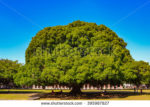
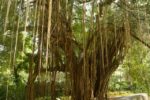
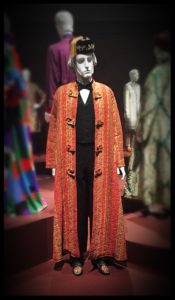
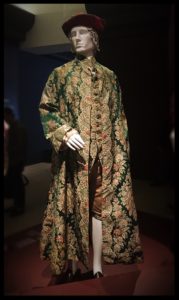
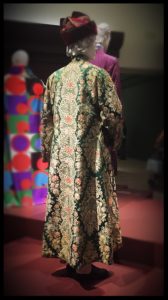
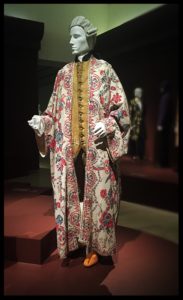
One comment